Menus
- Old versus new in comparison
- Patient optimization of details
- Mechanical running noises always audible
- Old one feels better
- Dynamic mode is suitable for brisk country road driving
- Conclusion
Theme special
Everything about BMW Motorrad
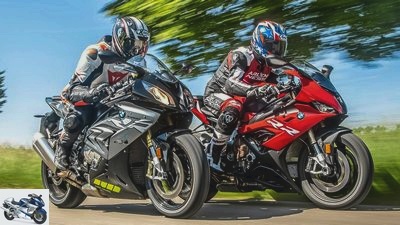
Jorg Kunstle
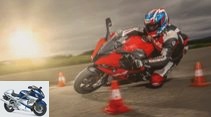
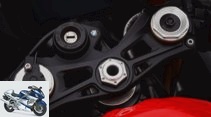
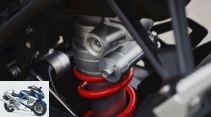
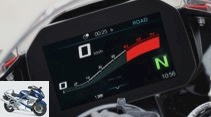
16 photos
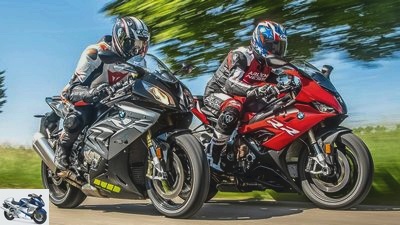
Jorg Kunstle
1/16
In the comparison test, the new BWM S 1000 RR competes against its predecessor. Which super sports car will win the test??
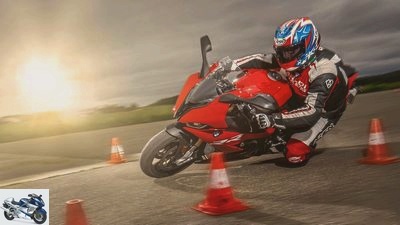
Jorg Kunstle
2/16
3.0 seconds from 60 to 100 km / h – the new one needs in sixth gear.
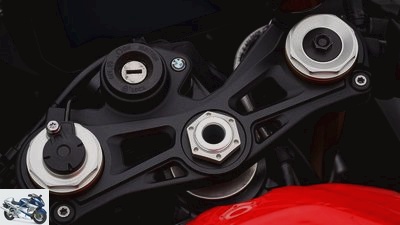
Jorg Kunstle
3/16
Fork and shock absorber as symbols for the successful coordination of the semi-active chassis.
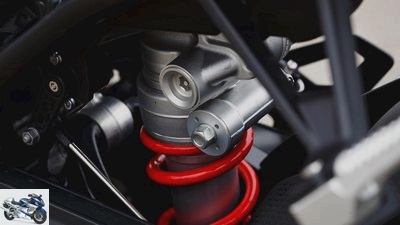
Jorg Kunstle
4/16
But the bigger part is what you can’t see – the electronics.
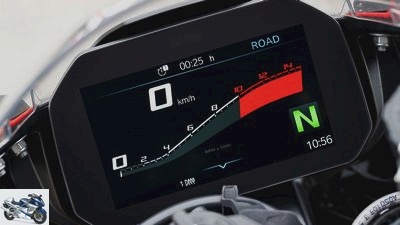
Jorg Kunstle
5/16
Different display modes of the TFT display.
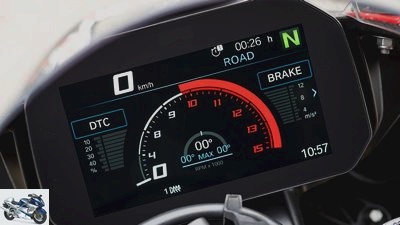
Jorg Kunstle
6/16
Incidentally, this is always easy to read.
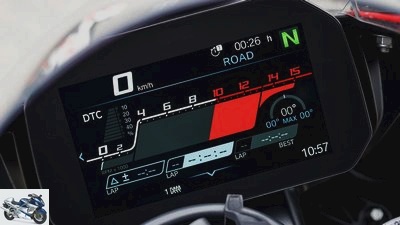
Jorg Kunstle
7/16
The red area moves higher and higher as the engine temperature rises.
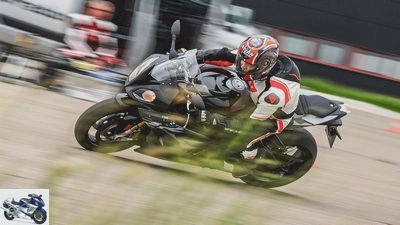
Jorg Kunstle
8/16
What about the predecessor?
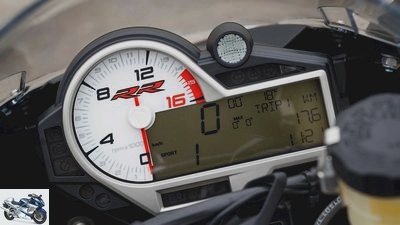
Jorg Kunstle
9/16
The instrument of the 2018 BMW can also have different modes. In principle, however, the appearance remains the same.
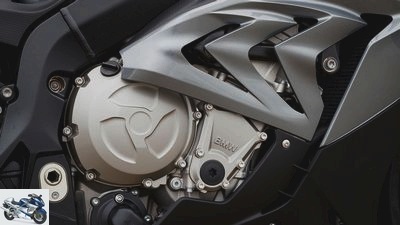
Jorg Kunstle
10/16
Typical features of the ancients: the pronounced asymmetry of the front panel.
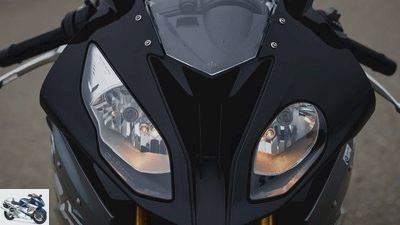
Jorg Kunstle
11/16
The right-hand arrangement of the water pump is also a feature of the old S 1000 RR. The new one has given up both.
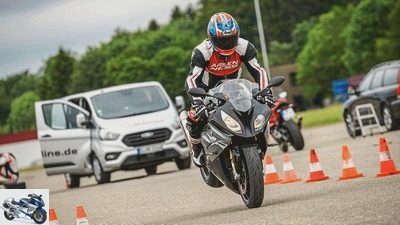
Jorg Kunstle
12/16
While the 2018er BMW stays on track even with pronounced rear wheel flaws, the rear of the new one swings out immediately.
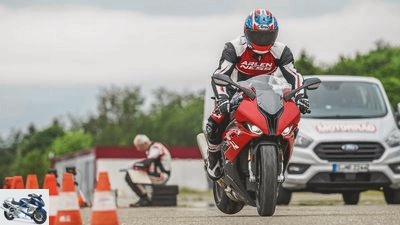
Jorg Kunstle
13/16
41.3 meters of braking distance from 100 km / h. Both BMWs agree on that.
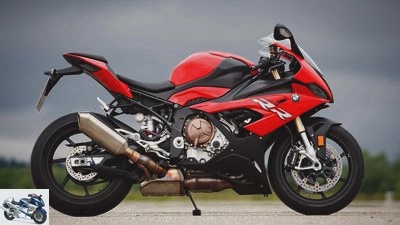
Jorg Kunstle
14/16
The new test machine is worth 21,865 euros. For the 2018 BMW in our test configuration, 20,950 euros are due.
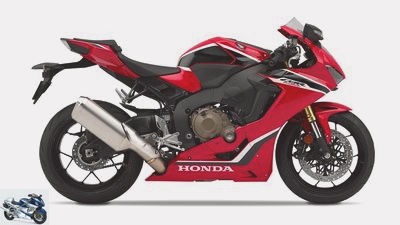
Honda
15/16
Not in the mood for a super sports car from BMW? The Honda CBR 1000 RR Fireblade could be a serious alternative in that case.
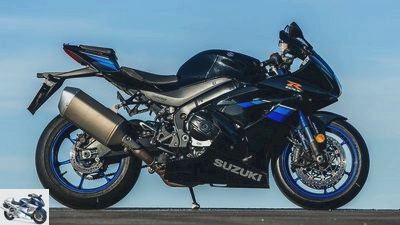
Arturo Rivas
16/16
Suzuki fans can fall back on the GSX-R 1000.
BMW S 1000 RR – model year 2018 and 2019 in the test
Old versus new in comparison
The newly minted and completely renovated BMW S 1000 RR of the 2019 model year in the MOTORRAD 1000-point test. In comparison: the previous model from 2018.
Somewhere in Upper Swabia, in the middle of a 50-kilometer corner paradise, two swing S. 1000 RR to the valley. The drivers let their motorcycles run briskly, curve around some rocky outcrops with centimeter precision, dance through alternating curves, play with the righting moment when braking into slow curves, before diving down to the apex. You drive with commitment, but relaxed. In spite of this, or precisely because of this, the displays record maximum tilt angles of over 50 degrees – just like that, so easy. When they regularly swap motorcycles, the two look into each other’s shining eyes.
Buy complete article
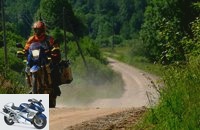
Top test BMW S 1000 R
Just in time
Subtle but noticeable differences
Such journeys are among the most beautiful experiences in everyday life for a motorcycle tester. Describing them should by no means make those jealous who usually cannot ride a motorcycle on normal weekdays away from rush hour traffic; that would be an undesirable side effect. First and foremost, the preceding paragraph is intended to set a standard, to raise awareness of the enormous dynamic driving potential that lies in both S 1000 RRs, the new and the not-so-old. Readers are kindly asked to consider all points of criticism that were revealed during the test drives and in the driving laboratory of the top test course and that are described below. There are subtle, albeit noticeable, differences that distinguish “good” from “not quite so good”.
Jorg Kunstle
The new S 1000 RR has a difficult legacy.
This not only applies to the two BMWs, but to motorcycle development in general. Great progress from one model generation to the next is not to be expected, it is the patient optimization of details that produces the slightly better motorcycle. And over time, the many small steps add up. The colleagues from PS have clearly described this using the example of the S 1000 RR, who were able to ride all generations since 2009 in direct comparison for their current issue 7/2019.
Patient optimization of details
The semi-active chassis made the greatest progress from the 2018 to the 2019 model. This can hardly be due to the mechanical quality of the damper elements; Better coordination is the decisive factor here; higher computing power and faster adjustment of the damper valves may also play a role. In any case, the new S 1000 RR is much more comfortable on bumpy roads, even in the “Dynamic” driving mode than the 2018 model in the moderate “Rain” and “Sport” modes. Confirmation for this driving impression was provided by the circular path of the course. During each lap, a rain gutter is driven over twice at a low angle, the front wheel briefly loses contact with the ground each time. The spring elements of the current S 1000 RR iron these channels smoothly so quickly that the machine achieves a significantly higher speed and a faster lap time than its predecessor. This always had to be straightened up briefly so that the front tire could find ground contact and build up grip.
Jorg Kunstle
The new S 1000 RR has become even sportier and faster.
Even in a discipline for which it was by no means built, the 2019 BMW retains impeccable suspension comfort and pleasant steering properties thanks to the semi-active damping – with an 86-kilogram passenger on a rough road. It looks far less tail-heavy than it actually is. The only problem is that hardly anyone wants to sit in the postcard-sized seat for the front passenger. “And what about the engine?” May be asked by one or the other who has registered the camshaft as the most spectacular innovation in the four-cylinder high-performance engine. In fact, the intake camshaft with its two different cam profiles for low and high engine speeds gives the four-cylinder engine a substantial gain in torque between 3,000 and 8,000 rpm. The torque values, especially from low speeds, are a bit better. That means something, because since the first S 1000 RR, the BMW have been among the most powerful super athletes. The new one, however, can be ridden as lazily and at low revs as a fat 1300 cc naked bike, and in the higher speed ranges you get an incomparably higher level of performance and revving.
Mechanical running noises always audible
And now to break a lance for the conventionally igniting inline four-cylinder: This ability to run smoothly even at 2,000 rpm under load and to pull up from there without holes is also due to the even firing order. The 65-degree V4, twin pulse and crossplane firing sequences of other super athletes may have their advantages when MotoGP and Superbike World Championship demigods have to bring their tires over a racing distance. In public transport they turn out to be rather disadvantageous. They require higher speeds and longer clutch grinding when starting, much more gearshift work on winding roads and tend to run rougher. Although the BMW engines, which have been optimized for low weight and little internal friction, have no balance shafts and are therefore not among the lowest-vibration in-line four-cylinder engines, they offer decent smoothness over a wide range of the usable engine speed range. Due to the thin case walls, mechanical running noises are always audible until the wind noise gets out of hand at higher speeds.
Jorg Kunstle
The 2018 version is still convincing.
Both BMW engines are also pleasant to drive because they accelerate cleanly during load changes. A little more energetic in the sharper modes, but never too harsh, not even in the turning points of the fast and slow slalom, which equate to a turn around a traffic island. Otherwise, the measurement results in the two slalom courses once again prove the advantages of the new S 1000 RR. It reached higher speeds and the only reason the lap times are not significantly better is that the clutch could not be dosed as cleanly when starting off as the 2018 model. Apparently she had already suffered before the test drives.
Old one feels better
The paradox, however, is that the new one drives faster, but the old one feels better and, objectively, hits the targeted line more precisely. After long trials, the testers came to the conclusion that the measurable advantages of the new BMW are most likely due to its lower weight, the centrifugal mass of its crankshaft, which has been reduced by around 30 percent, and the better ergonomics of the driver, whereas the better steering precision of the 2018 machine is a gift the tire is. It was soled with Bridgestone S22, whereas the 2019 model was delivered to the editorial team by BMW with Michelin Power RS; on the rear wheel in the plus version and in the dimension 200/55 ZR 17, which is homologated on the forged wheels. In the sports tire test in this booklet, the Bridgestone proved to be superior to Michelin in terms of handiness and accuracy, this finding was confirmed. In addition, the wear pattern of the size 200 tire shows that the contact area can only be fully exhausted under the extreme pressure that occurs when driving on the racetrack. For public transport, a 190/55 ZR 17 – the standard dimension for the S 1000 RR in any case – creates more harmonious steering properties, while other types of tires also have better wet grip.
Jorg Kunstle
The front of the "old" S 1000 RR is unmistakable, but has not been adopted in the new model.
The testers also attribute a part of the somewhat strange braking behavior of the new S 1000 RR to the peculiarities of the Michelin pairing, especially since it was also beginning to be observed in a Fireblade used for comparison. In contrast to the predecessor, the wheels could not be kept in one line if the rear wheel was fully relieved in the event of emergency braking. This usually only happened in the lower speed range – at higher speeds the rear wheel remains on the ground – but it resulted in the rear swinging out immediately. The driver instinctively steers against it, and if this reaction coincides with brief ABS control processes, there is pronounced agitation around the steering axis until it comes to a standstill. Tends to be stronger in dynamic mode than in road mode.
Dynamic mode is suitable for brisk country road driving
Overall, the delay values are okay; much more can hardly be expected from such a light motorcycle despite its relatively long wheelbase. You are moving very close to the physical limit. Therefore, it is recommended once again to practice an emergency stop every now and then. If you are shocked by the reactions of your motorcycle in an emergency, you will brake worse.
Jorg Kunstle
The new S 1000 RR scored 729 points in the top test. The 2018 version also collects a remarkable 711 points.
A word about the electronic driving aids: We did not try the “Race Pro 1” to “3” modes for this test. They are reserved for the racetrack. During the drive described at the beginning, the “Road” mode reduced the performance too defensively in an inclined position. Even in “Dynamic” mode, the electronic brake could occasionally be felt before the limit range was reached, but this happened at a speed at which not many other motorcyclists attempt to overtake. So this mode works well for brisk country road trips.
Conclusion
Although the current S 1000 RR is a completely new design and is slightly superior to its predecessor in a number of details, it still maintains continuity in one important point: it remains a super athlete who is also a great driving pleasure off the racetrack in mundane everyday traffic, without its driver to cause stress with an extreme seating position, over-hard suspension or sharp driving behavior.
Related articles
-
Yamaha MT-07 model year 2017 and 2018 test
Arturo Rivas 16 pictures Arturo Rivas 1/16 The Yamaha MT-07 models from 2017 and 2018 in a comparison test. Arturo Rivas 2/16 2018: The damper …
-
48 hp motorcycles (model year 2019) in a comparison test
46 photos Jorg Kunstle 1/46 Six motorcycles compete against each other in the 48 hp comparison test. The models Kawasaki Z 400, KTM 390…
-
Honda CB 300 R model year 2018
6th photos 1/6 Honda CB 300 R (2018). Honda 2/6 Honda CB 300 R model year 2018. Honda 3/6 Honda CB 300 R model year 2018. Honda…
-
Artist 13 photos Artist 1/13 The on-board tool kit of the BMW almost ties in with old traditions. With the help of the nine-piece set, you can strip the…
-
factstudio.de 15th photos factstudio.de 1/15 Honda CB 1000 R + in the top test. factstudio.de 2/15 The design line of the new CB 1000 R is called “Neo…
-
Kawasaki Z 1000 – model years 2004 and 2014 in a comparison test
fact 16 pictures fact 1/16 memories of the old Z 900 and Z 1000 times were made possible by the “four-in-two-in-four exhaust system” with its four …
-
New motorcycles from the Chinese manufacturer Motrac – model year 2018
Motrac 9 pictures Motrac 1/9 The Motrac MT-X500 stands out due to its aggressive appearance. Motrac 2/9 2016 a concept drawing of her was presented ….
-
BMW S 1000 RR (2019) in the 50,000 km endurance test
Theme special Everything about BMW Motorrad Tobias Wassermann. 7th photos Uli Baumann 1/7 MOTORRAD welcomes the BMW S 1000 RR to the long-term test…
-
Beta sports enduro bikes (model year 2018) in an individual test
beta 9 photos beta 1/9 The new Beta RR 125 2T in the driving report. beta 2/9 Flat piece: The narrower coupling enables a flatter housing cover. An…
-
Comparison test BMW S 1000 R and BMW S 1000 RR
www. 26 pictures www. 1/26 Regicide has always started mostly from the family. History can repeat itself …